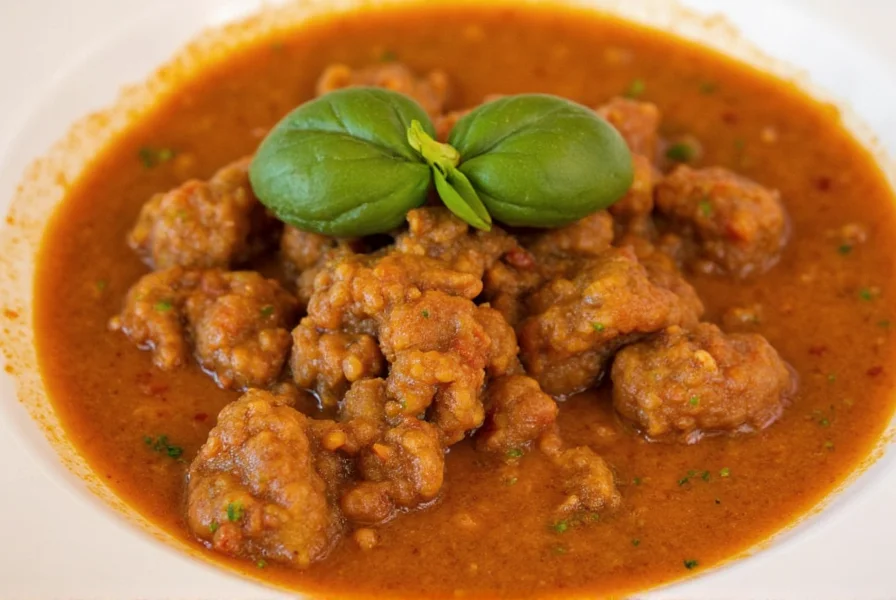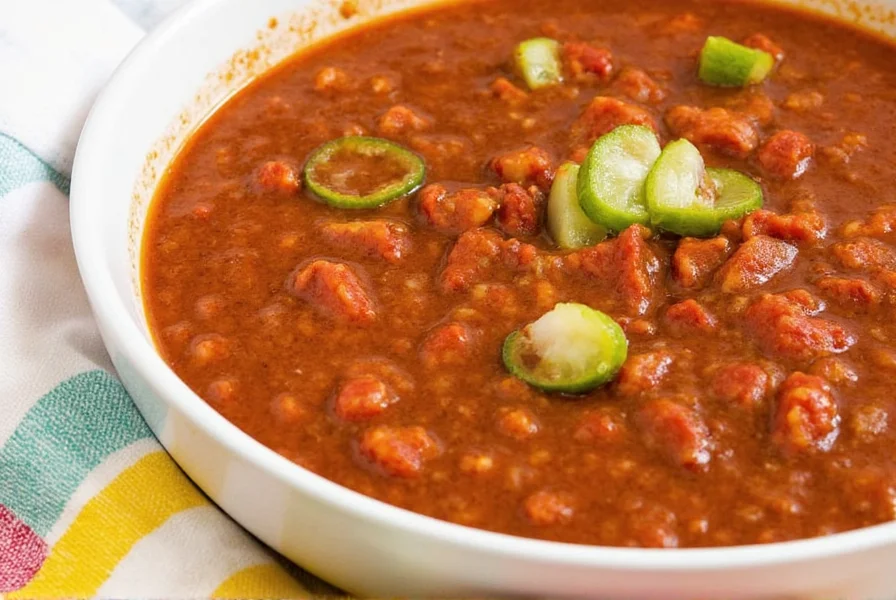Brazilian Sofrito: The Secret Ingredient That Brings Carnival to Your Kitchen!
Imagine the pulsating rhythm of samba echoing through your kitchen as you stir a bubbling pot of rich, fragrant Brazilian sofrito. This isn’t just a cooking moment—it’s a full-blown carnival in a pan. Whether you’re an adventurous home cook or a professional chef looking to add more global flair to your repertoire, Brazilian sofrito is a must-try ingredient that opens up a world of flavor and tradition.
Table of Contents
- What Exactly Is Brazilian Sofrito?
- A Taste of History: Origins of Brazilian Sofrito
- Flavor Profile: What Makes It Unique?
- How Does It Compare Globally? (Sofrito Showdown)
- Pro Tips for Cooking with Brazilian Sofrito
- Buying Guide: Choosing the Best Brazilian Sofrito
- Recipe Ideas to Spice Up Your Week
- Final Thoughts
What Exactly Is Brazilian Sofrito?
Unlike its Mediterranean cousins, Brazilian sofrito (often called salmoura or refogado) is more than just aromatics simmered in oil. It’s a bold, colorful base made by sautéing ingredients like onions, garlic, tomatoes, bell peppers, cilantro, and sometimes even malagueta chili peppers into a thick, aromatic paste.
This mixture forms the backbone of many Brazilian dishes, from hearty feijoada to zesty moqueca. Think of it as the soul of Brazilian cuisine, infusing every bite with warmth, depth, and complexity.
A Taste of History: Origins of Brazilian Sofrito
The roots of Brazilian sofrito trace back to colonial times when Portuguese settlers brought their culinary traditions across the Atlantic. But over time, the recipe evolved with the addition of local ingredients introduced by African slaves and indigenous peoples.
- Portuguese influence: Introduced olive oil and the concept of sautéed bases.
- African contribution: Added bold flavors and spices like dendê (palm oil).
- Indigenous elements: Incorporated native peppers and herbs.
This fusion gave birth to a uniquely Brazilian creation—one that reflects the country’s diverse cultural tapestry through taste.
Flavor Profile: What Makes It Unique?
Brazilian sofrito is all about contrast and balance. Here’s what makes it stand out:
- Sweetness: From ripe tomatoes and caramelized onions.
- Heat: A gentle kick from malagueta or other chilies.
- Herbaceous freshness: Cilantro and parsley lend brightness.
- Umami: Often deepened with fish sauce, shrimp paste, or palm oil.
- Oiliness: Palm oil adds richness and a gorgeous orange hue.
It’s not just a sidekick in a dish—it’s the main event, enhancing everything it touches.
How Does It Compare Globally? (Sofrito Showdown)
Let’s see how Brazilian sofrito stacks up against other international versions in terms of ingredients, uses, and regional characteristics.
| Region | Main Ingredients | Texture & Consistency | Typical Use | Unique Twist |
|---|---|---|---|---|
| Spain / Italy | Onion, garlic, tomato, olive oil | Thin, oily, and slightly chunky | Base for pasta sauces, stews, and rice dishes | Uses olive oil almost exclusively |
| Puerto Rico | Culantro, onion, garlic, peppers | Green, fresh, and finely chopped | Marinades and soups | Uses culantro instead of cilantro |
| Caribbean (Cuban) | Onion, garlic, peppers, herbs | Chunky and lightly cooked | Used raw or cooked into meats and beans | Often includes cumin and citrus |
| Brazil | Onion, garlic, tomato, peppers, cilantro, palm oil | Thick, rich, and deeply colored | Used as a finishing sauce or base for stews and seafood | Dendê oil gives it signature color and nutty flavor |

So while the basic idea of sofrito is shared globally, Brazilian sofrito brings its own party vibe to the table.
Pro Tips for Cooking with Brazilian Sofrito
If you’ve never worked with Brazilian sofrito before, here are some tips to make sure your first attempt turns out perfectly:
- Use a heavy-bottomed pan: Sofrito needs slow cooking to develop flavor without burning. A cast iron or stainless steel skillet works best.
- Don’t rush the process: Letting the aromatics cook low and slow allows the sugars to caramelize naturally, creating deeper flavor layers.
- Add liquid if needed: If things start sticking, a splash of water, broth, or wine can help loosen things up without scorching.
- Balance the heat: Adjust the amount of chili to your liking. You want a whisper of heat, not a scream.
- Finish with acid: A squeeze of lime or lemon brightens up the dish and prevents it from tasting flat.
- Store properly: Refrigerate for up to a week or freeze in portions for longer storage. It’s a great meal prep hack!

Buying Guide: Choosing the Best Brazilian Sofrito
Whether you're buying pre-made sofrito or the individual ingredients to make your own, here’s a quick breakdown of what to look for and why.
| Product Type | Features | Pros | Cons | Best For |
|---|---|---|---|---|
| Pre-made Brazilian Sofrito Paste | Made with onions, garlic, peppers, cilantro, and palm oil; shelf-stable or refrigerated | Convenient, consistent flavor, saves time | Limited customization, can be expensive | Busy cooks, beginners, or those short on time |
| Fresh Ingredients Packets | Pre-chopped onions, garlic, peppers, and herbs | Fresher, customizable ratios | Still requires cooking time | Intermediate cooks who want control over texture and taste |
| Dried Sofrito Mix | Dehydrated version with concentrated flavor | Long shelf life, easy to store | Less authentic, may need rehydration | Backpackers, campers, or occasional users |
| DIY Blend (Make Your Own) | Full control over ingredients and quality | Most rewarding, cheapest long-term option | Time-consuming, requires chopping skills | Foodies, chefs, or anyone wanting total control |
Top 3 Pre-Made Brazilian Sofrito Brands
- Amara Dendê: Known for its organic palm oil-based blends. Rich and smoky with a smooth finish.
- Sabores do Brasil: Offers traditional and mild versions. Great for everyday use.
- NaturaBras: Vegan-friendly, gluten-free, and preservative-free. Perfect for health-conscious cooks.
Recipe Ideas to Spice Up Your Week
Ready to dive in? Try these three delicious recipes using Brazilian sofrito to kickstart your culinary adventure:
1. Brazilian Shrimp Moqueca
- Ingredients: Fresh shrimp, coconut milk, palm oil, Brazilian sofrito, cherry tomatoes, and cilantro.
- Method: Sauté the sofrito until fragrant, add shrimp and tomatoes, pour in coconut milk, and simmer gently until shrimp are pink and tender. Finish with fresh cilantro.
- Serving suggestion: Serve with white rice and farofa (toasted cassava flour).
2. Sofrito Chicken Skillet
- Ingredients: Boneless chicken thighs, sofrito paste, potatoes, carrots, peas, and black olives.
- Method: Brown chicken, cook the sofrito until deep red, add veggies and simmer together. Finish with olives for briny contrast.
- Serving suggestion: Spoon over polenta or crusty bread for a rustic meal.
3. Feijoada with Sofrito Base
- Ingredients: Black beans, pork belly, sausage, sofrito, bay leaf, and collard greens.
- Method: Cook the sofrito until thick, add pork and beans, season well, and simmer for 1–2 hours. Stir in greens at the end.
- Serving suggestion: Traditional Sunday family meals—best served with orange slices and farofa.
Final Thoughts
Brazilian sofrito isn't just another pantry staple—it's a taste of culture, history, and celebration. Whether you buy it ready-made or whip it up yourself, this versatile base can elevate your cooking with minimal effort but maximum flavor.
So go ahead, grab a jar (or a handful of fresh ingredients), and let your kitchen dance to the beat of Brazilian sofrito. Because once you taste it, there’s no going back to plain old tomato sauce ever again.










 浙公网安备
33010002000092号
浙公网安备
33010002000092号 浙B2-20120091-4
浙B2-20120091-4